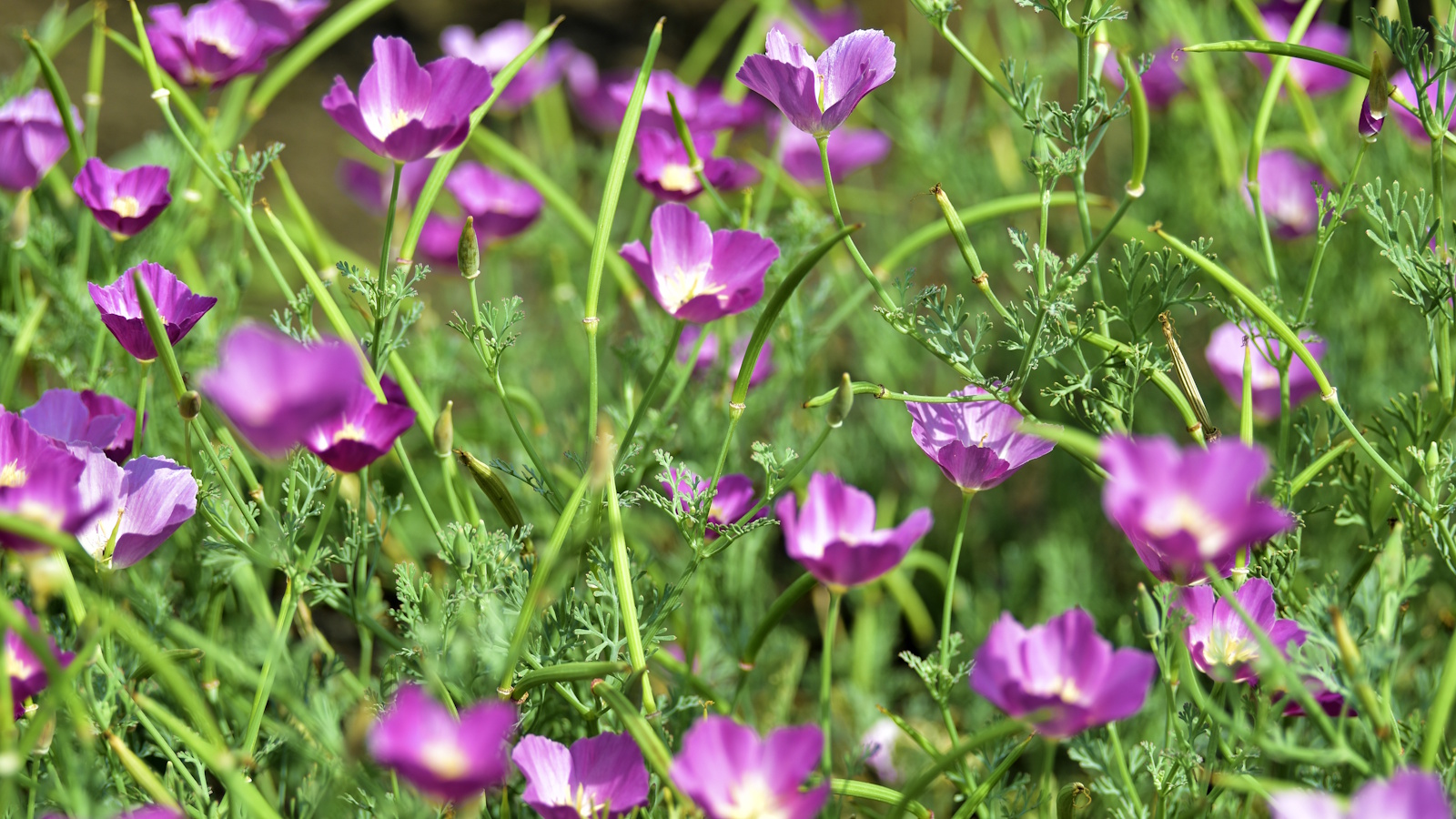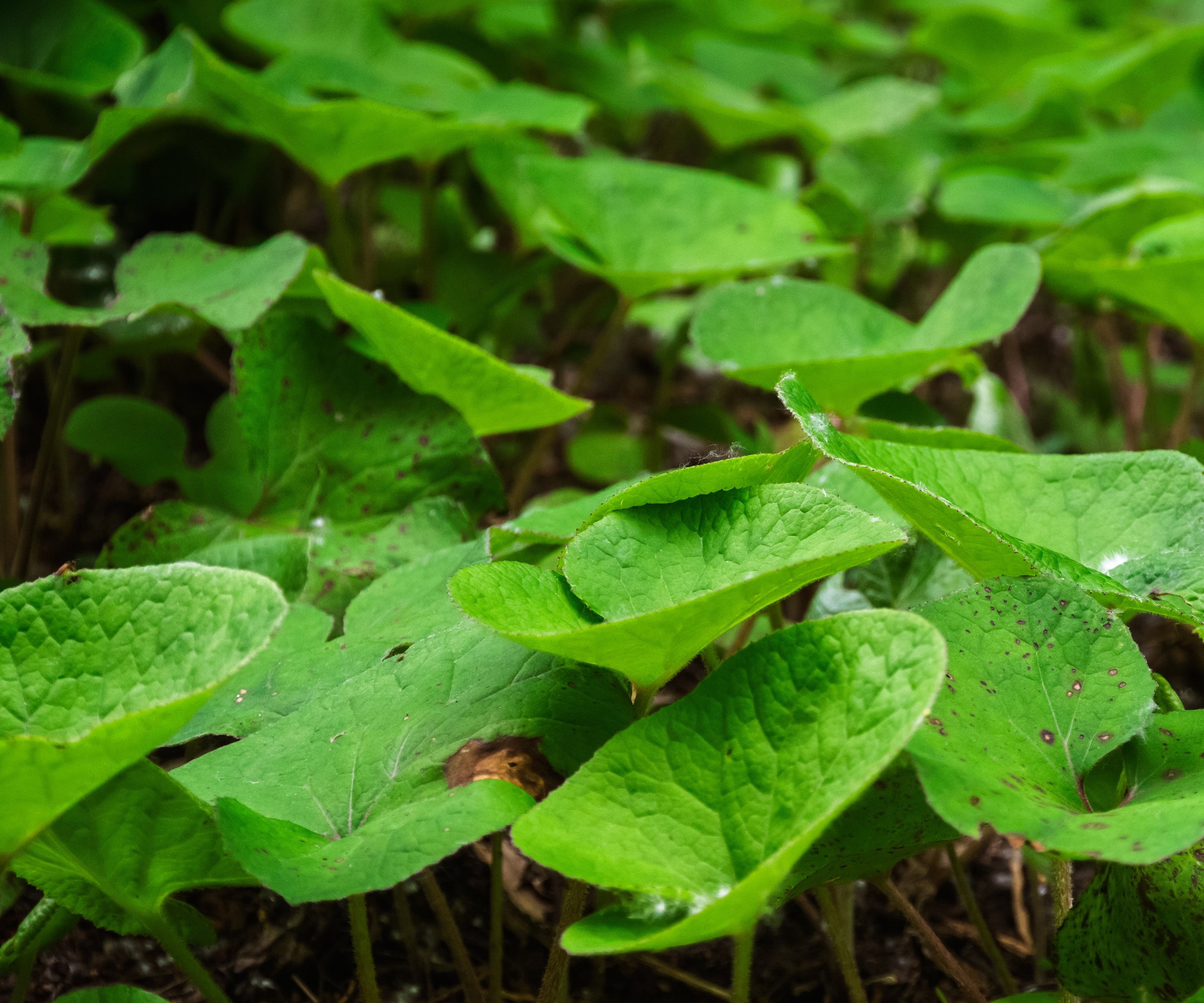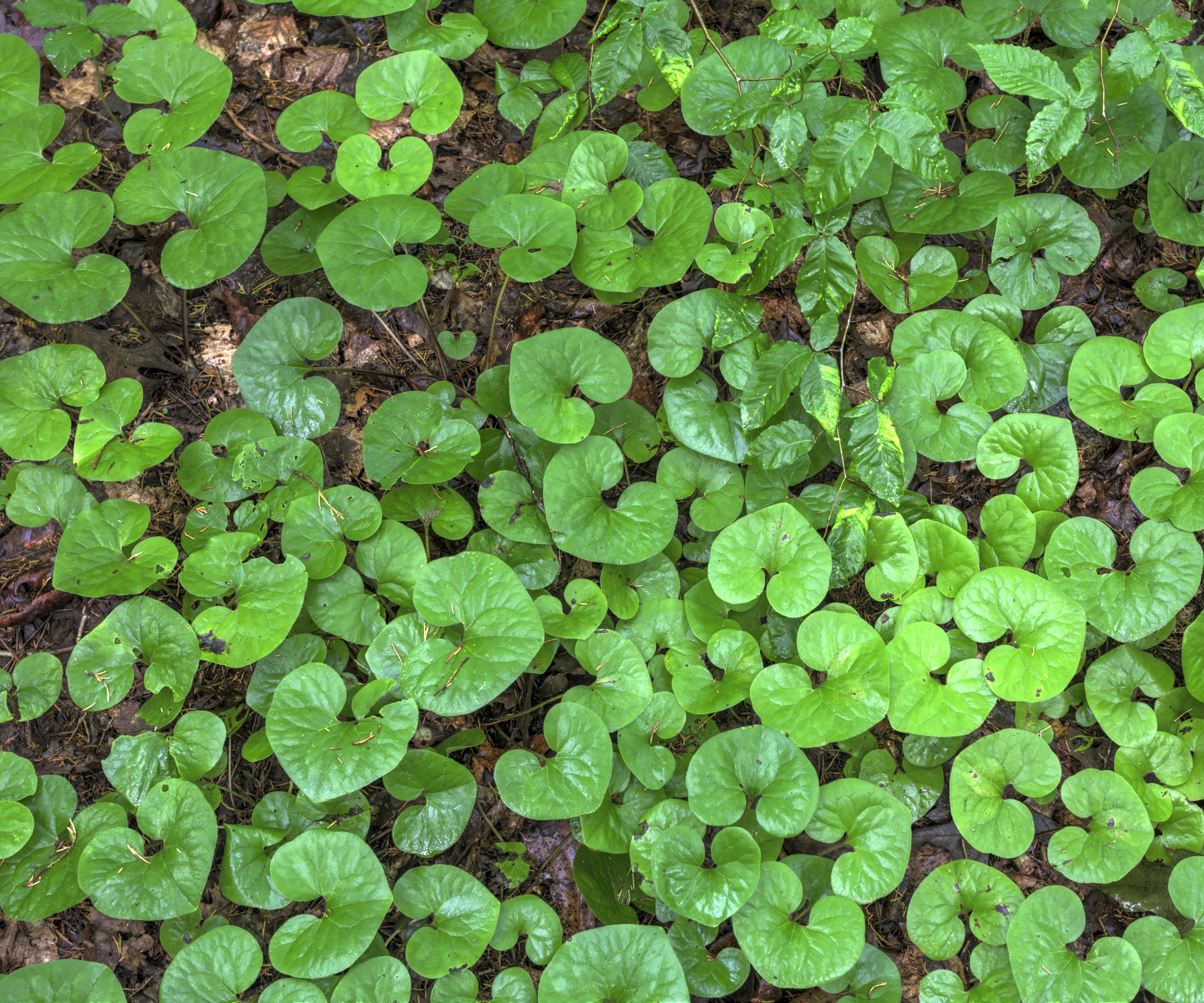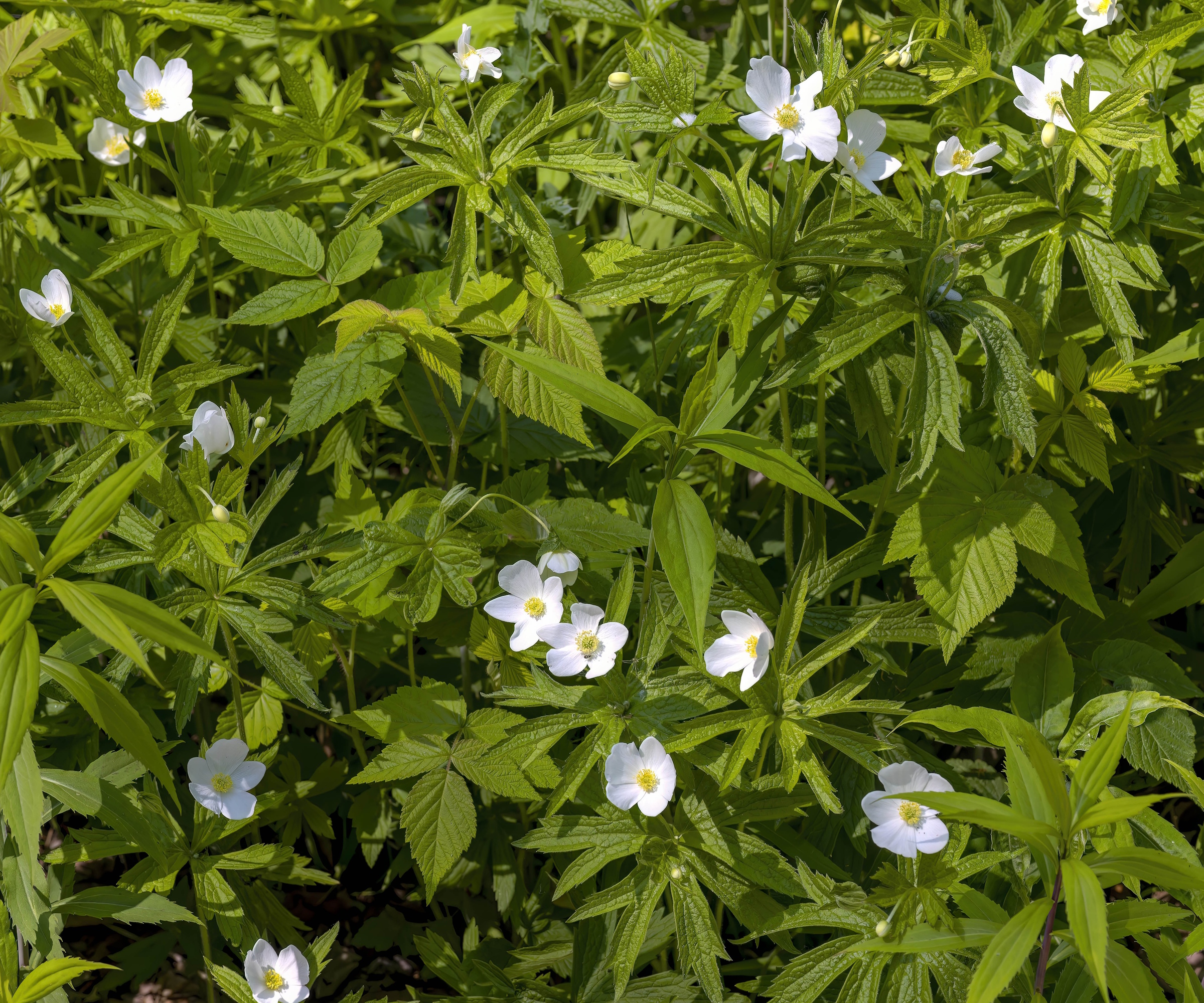Best native ground cover plants to stop weeds – 5 expert-approved species to keep weeds out of your borders
These low-growing North American plants will stop weeds from dominating your yard


Many of us gardeners find a spot of weeding calming, almost meditative. However, this can be less so if you have borders full of nettles or brambles - and let's face it, most gardeners would rather spend their time enjoying their outdoor space than constantly battling unwanted plants. The solution? Native ground cover plants to stop weeds. Many North American species are perfectly adapted to local conditions and naturally suppress weeds, while also adding greenery to borders.
As a former professional gardener, I learned to value low-growing plants with dense root structures. These plants can help to keep weeds at bay, and having worked in large estates and private gardens across the UK and Italy, where the borders went on and on, using ground cover plants helped to make my job much easier.
Fortunately, many North American native ground cover plants provide an easy solution, outcompeting weeds and protecting soil health. From green mats of wild ginger to flowering carpets of purple poppy mallow, here are five native ground cover plants to stop weeds that provide both beauty and practicality.

Best native ground cover plants to stop weeds
If your yard is overrun with invasive weeds, consider growing some of the best native plants to stop weeds. As opposed to using chemicals, filling your borders with weed-suppressing species is a natural solution to keep problem plants at bay. Here are five native ground cover plants to stop weeds that are low-growing and can quickly fill challenging areas of your yard.
1. Purple poppy mallow

Callirhoe involucrata, commonly known as purple poppy mallow is a native plant found growing across the Great Plains, including in Wyoming, Nebraska, Kansas and Colorado.
'Purple poppy mallow, also lovingly called winecups, is widely used as a ground cover plant,' says plant expert, Katie Sunderlage, based in Wisconsin. 'It is valued for its spreading habit and large, deep magenta blooms, which give the plant its nickname.
'Growing best from zone 5 to zone 8, this flowering plant prefers full sun and well-drained soil,' Katie says, 'and will not tolerate wet soil conditions. Purple poppy mallow spreads quickly, with each plant growing up to three to four feet wide. Not only is it a great way to deter weeds from spreading, it also attracts many beneficial pollinators.'
Design expertise in your inbox – from inspiring decorating ideas and beautiful celebrity homes to practical gardening advice and shopping round-ups.
Purple poppy mallow seeds are available from Amazon.

Operations Manager at Holland Group, managing the customer service department and purchasing. Katie has been in the green industry since 2005 in the Greater Milwaukee area, earning her degree in Horticulture in 2008. She has been able to share her love for plants working in multiple garden centers, in sales positions and most recently in an online retail platform at Holland Group.
2. Wild ginger

Wild ginger is one of the easiest ground cover plants to grow. It is native to Eastern North America and found growing throughout much of Canada and the United States, including in Pennsylvania, Virginia and New York.
'Asarum canadense, commonly known as wild ginger, is a densely rooted ground cover plant for shade that helps to prevent weeds from growing,' says Katie. 'In terms of how to grow wild ginger, it is hardy down to zone 3 and does well in cooler, northern states.'
Be warned that in many cool, shady environments, including woodlands, wild ginger is vigorous and can be considered an invasive ground cover plant if left unmanaged.
'One of the best native perennials to stop weeds, wild ginger does best in well-drained soil conditions but can tolerate dry, drought conditions as well as heavy clay once established,' Katie says. 'The heart-shaped leaves are very attractive and create a nicely uniform mounding shape, eventually carpeting woodland beds.
'Wild ginger does have a distinct ginger scent, helping to add a sensory element to shady locations,' Katie adds. 'What's more, not only will this species ward off invasive weeds, it is also deer resistant.'
Native wild ginger seeds are available from Walmart.
3. Meadow anemone

'Meadow anemone, or Anemone canadensis, is a very hardy ground cover that can be grown to hamper weeds,' Katie says. It is found growing throughout the Midwest, from Montana to Maine, growing best in US hardiness zones 3 to 8.
'Meadow anemone is very fast-growing and does best in moist, wet soil,' Katie says. 'This plant is often used on shorelines to help with erosion control, but should also be a consideration if you are wondering how to get rid of weeds.
'The deeply serrated foliage offers season-long interest along with white blooms in late spring, as can be seen in the image here. For the best results, plant in full to partial sun. With time, the underground rhizomes will prevent problem plants from growing.'
Meadow anemone seeds are available from Amazon.
4. Wild strawberry

Wild strawberry, or Fragaria virginiana, is naturally occuring in all US states. If you are keen to implement a naturalistic planting design in your yard, wild strawberry is a good plant to consider. 'It is a great ground cover option to prevent weeds,' Katie says, 'and that is to say nothing of the delicious fruit.
'Hardy down to zone 3, Fragaria virginiana does best in full to partial sun and in well-drained soil,' Katie adds. 'It tends to perform best in acidic soil, although is relatively tolerant of most conditions.
'White flowers will emerge in mid to late spring, followed by delicious berries in summer. What's more, this woodland plant will attract many pollinators while helping with weed and erosion control near waterways.'
Wild strawberry seeds are available from Amazon.
5. Golden groundsel

Masses of yellow daisy blooms emerge in spring and summer
Carolyn Walker, plant expert and owner of Carolyn's Shade Garden Nursery, recommends growing Packera aurea, commonly known as golden groundsel, as one of the best ground cover plants for pollinators.
'It is a remarkably tolerant plant,' Carolyn says. 'It will grow in wet or dry soil, sunny or shady borders. Its evergreen leaves are very useful for suppressing weeds, while the fragrant yellow flowers support a range of native pollinators. It is estimated that the plant supports 20 butterfly species.'
Golden groundsel is abundant throughout much of Eastern North America, growing in swamps and wet meadows from New England to Minnesota, and would certainly make an attractive native addition to any yard.

Carolyn is a plant expert and owner of Carolyn’s Shade Gardens, a retail nursery in Bryn Mawr, Pennsylvania. Carolyn grows and gardens in zone 6b/7a and is a shady plant expert.
FAQs
What is a good native plant to stop weeds in a sunny yard?
For sun-tolerant native ground cover plants to stop weeds, try growing one of the native grasses that can handle heat and drought. For example, blue grama, or Bouteloua gracilis, is a long-lived North American grass, found growing across the Great Plains. It can be grown from zone 3 to zone 10 and can handle high heat and drought. Plus, as a bonus, the seedheads in the fall are some of the finest and are adored by gardeners for their seasonal interest. Blue grama seeds are available from Amazon.
Spring and fall are the ideal seasons to get these low-growing plants in the ground. Be sure to complete some deep watering after planting and every few weeks during the first year, to give them the best chance of success in the growing season ahead.
For another native ground cover plant to stop weeds, see our guide on how to grow creeping juniper. This tough and resilient plant is well-suited to cooler regions including Montana, Alaska and North Dakota.

Thomas is a Content Editor within the Gardens Team at Homes and Gardens. He has worked as a professional gardener for both public spaces and private estates, specializing in productive gardening, growing food and flowers. Trained in Horticulture at the Garden Museum, he has written on gardening and garden history for various publications, including The English Garden, Gardens Illustrated, Hortus, The London Gardener and Bloom. He has co-authored a Lonely Planet travel book, The Tree Atlas, due out in 2024.



